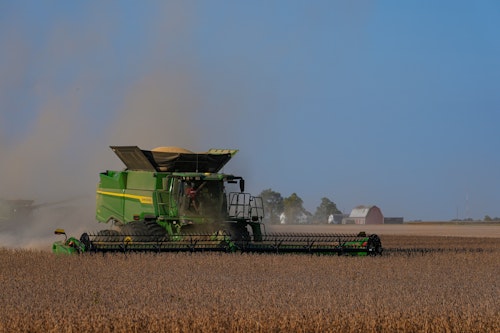The Looming Recession

One year after Donald Trump’s election rural America is saddled with unwanted tariffs, high input costs, and economic hardship. In this, our first monthly dashboard, we find a consensus that America’s farm economy is in a recession.
The Economy: Trump Tariffs and the Crop Sector Recession
- Ninety-one percent of agricultural economists surveyed by the Farm Journal believe the crop sector is in a recession, up from 53% in July.
- According to this anonymous monthly survey of economists, it comes down to high costs for farmers and low prices for crops.
- Economist: “We are near record low prices and record high inputs.”
- Economist: “Net farm income is consistently negative.”
- Economist: “Multiple years of low to no profitability.”
- Economist: “2025 is bringing negative returns… across nearly all row crops, with 2026 setting up to be another negative returns year.”
- American crop farmers expect to lose money on each acre harvested because of tariffs and uncertain export markets, falling crop prices, and rising input costs.
- Farmers profit margins are shrinking. Agricultural loan default notices have more than doubled in Minnesota and agricultural credit conditions are deteriorating.
- Some grain elevators were near capacity before harvest, resulting in higher storage fees for farmers and pushing grains to temporary storage options like ground piles.
- A multi-billion dollar crop farmer relief package is expected. Said one Pennsylvania farmer, “there’s a lot of negativity about subsidies, and I’m not a huge fan of them, but I’m gonna take something if I’m eligible for it.”
Soybeans: Ground Zero for Farm Crisis
China—the world’s largest buyer of soybeans—imported no soybeans from the United States in September though it imported 13% more soybeans that month than the same month in 2024. We last saw this during the 2018 trade dispute.
- China typically buys more than 50% of exported American soybeans, more than $12.5 billion of soybeans in 2024. The European Union is the second largest buyer and purchases roughly one-fifth as many American soybeans.
- But China is now buying more soybeans from Argentina and Brazil instead of the US.
- As a result, the price of soybeans collapsed in America—from $17 a bushel in 2020 to $10.
- After agriculture leaders called for action to restore access to markets like China, the Administratione announced in late October that China would buy 25 million metric tons of soybeans from the US in upcoming years—more than in 2025 but below the recent average of 29 million metric tons per year in 2020-2024. The price of soybeans has climbed up to $11.30s since the announcement, but a lot of the damage is done.
Beef is the New Eggs
Beef prices at the grocery store are up 14% in 2025 and sit at an unheard of $6.32 per pound for ground beef. This has sparked an intense debate that is unfolding about increasing imports of beef from Argentina.
- Ranchers contend that the marketplace is working: prices have increased because the American beef herd is at its lowest since 1951 and there is strong consumer demand.
- The additional imports from Argentina were announced as a step to reduce costs for consumers, though economists doubt consumer prices would be impacted and others have identified corporate consolidation as a reason for price increases.
- The price of ground beef is up 50% since February 2020. Consumers have continued to purchase ground beef, but purchases have started to plateau.
- Speaking of consolidation, in agriculture economy in general, a recession in farm country could lead to more foreclosures and more consolidation. “The most efficient and well-capitalized producers will survive and absorb land from the least efficient producers,” predicted one economist.
Rural Economic Stress
Rural Americans continue to face high prices and are more vulnerable to inflation, with an average discretionary income lower than urban communities.
- The Federal Reserve of Richmond found that for every year between 1990 and 2024, rural residents in MD, NC, SC, VA, and WV (its geographic area) have higher and more volatile unemployment rates than the urban residents in those states.
- Since March 2020, home prices have increased more rapidly in rural than urban areas.
- Since 2017, the average home value in rural America went from 2.5 times rural household income to 3.9 times rural household income in 2023.
- Since 2020, home price inflation has gone up 12 points faster in rural than urban areas, up 33% compared to 21%.
- Researchers in Nevada found that only 11 of 59 rural communities had affordable housing.
The Rural Health Gap
There is a persistent health gap between rural and urban Americans, with the age-adjusted death rate in rural communities 20% higher than urban areas.
- Compared to urban Americans, rural Americans have higher heart disease, cancer, injury, and suicide death rates.
- Rural women lack access to maternity care and have higher pregnancy-related mortality ratios: less than half of rural hospitals offer labor and delivery and they are more likely to stop offering those services after a merger.
- Rural hospitals continue to close at a higher rate than metro hospitals and more than 40% of rural hospitals operate at a financial loss.
- Experts are concerned that the new Rural Health Transformation Program will not stabilize rural hospital finances. For example, 76 rural hospitals in Texas are at risk of closing.
Downloads
Subscribe
Get updates whenever new content is added. We'll never share your email with anyone.
